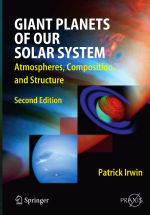Добрый день, Коллеги. Важное сообщение, просьба принять участие. Музей Ферсмана ищет помощь для реставрационных работ в помещении. Подробности по ссылке
Giant planets of our Solar system. Atmospheres, composition and structure / Гигантские планеты Солнечной системы. Атмосфера, строение и структура
The giant outer planets—Jupiter, Saturn, Uranus, and Neptune (Figure 1.1)—are by far the largest planetary bodies in the solar system and together comprise 99.56% of the planetary mass. Although very far from the Earth, the enormous physical size of Jupiter and Saturn meant that these planets were easily visible to the ancients. However, the other two “giants”, Uranus and Neptune, are significantly smaller and so much farther from the Earth that they were unknown before the advent of telescopes, although Uranus is in fact just visible to the naked eye. Uranus was discovered by accident in 1781 by William Herschel (1738-1822) (later Sir William Herschel). Perturbations in the observed orbit of Uranus led John Couch Adams (1819-1892) and Urbain Jean Joseph Le Verrier (1811-1877) to independently predict the presence of a further planet, and Neptune was subsequently discovered close to its predicted position by Johann Gottfried Galle (1812-1910) in 1846. The mean observable properties of the outer planets are listed in Table 1.1. <...>




